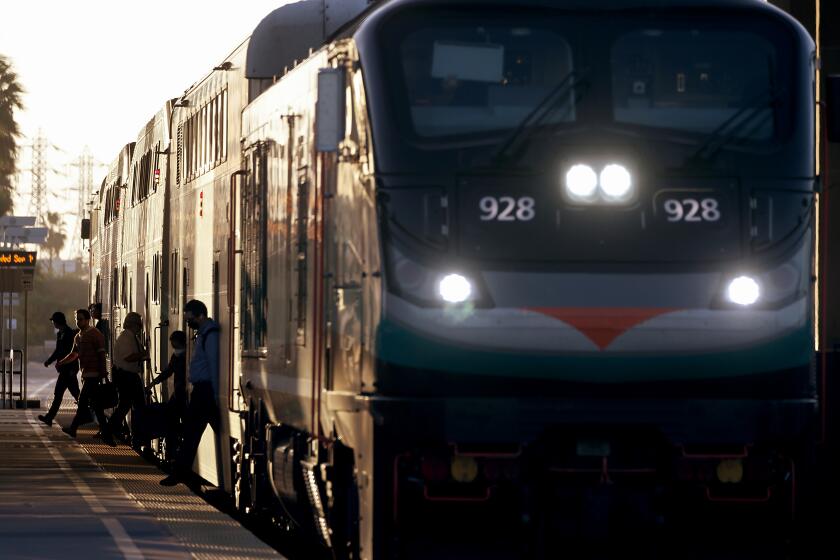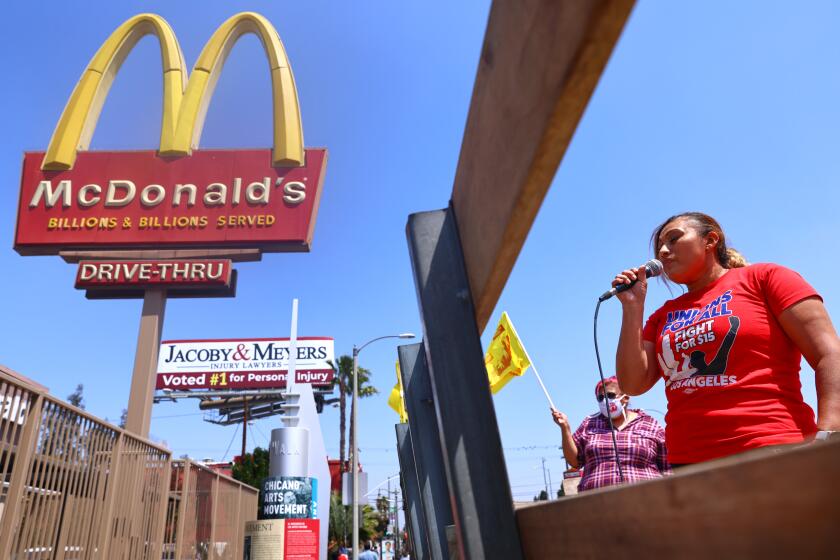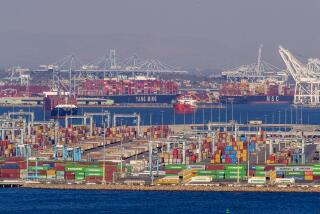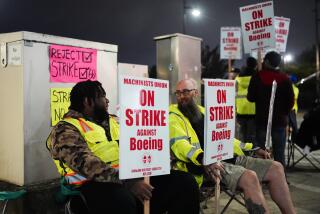Op-Ed: No rail strike for now, but workers aren’t done fighting
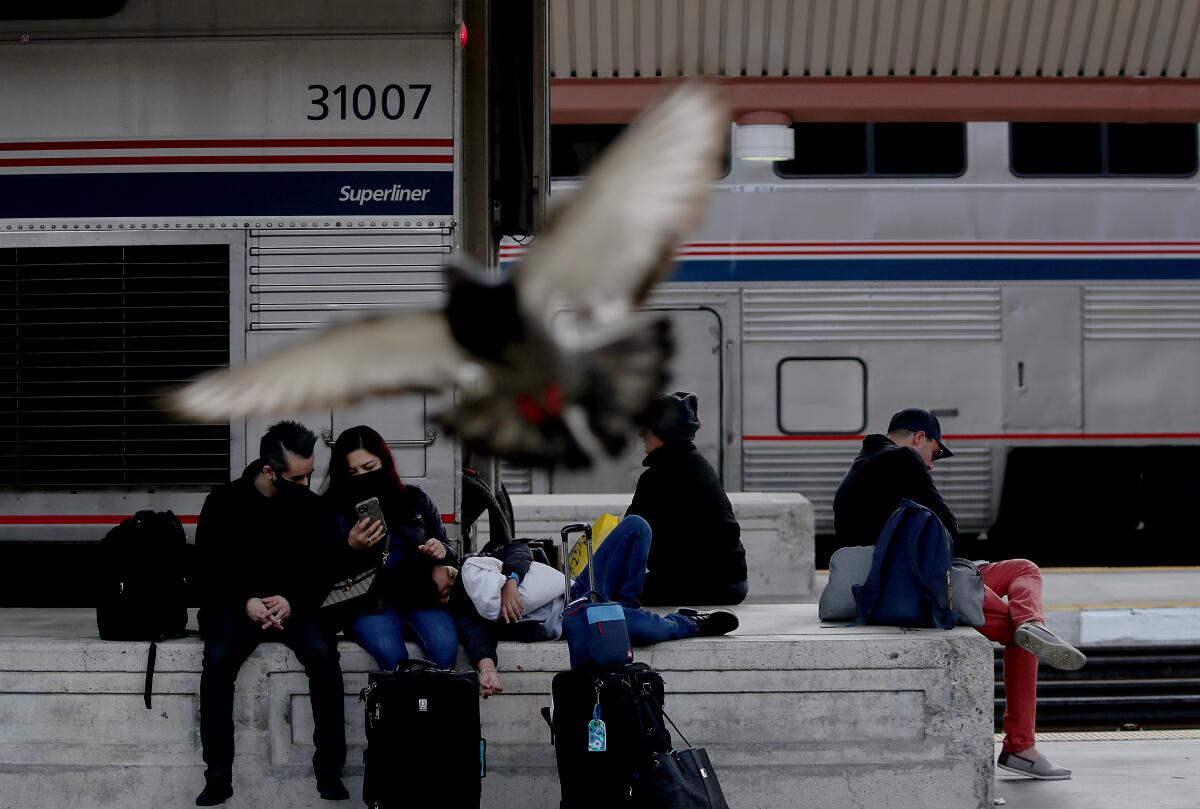
- Share via
With just days left to cut a deal, the threat of strike by some 115,000 railroad workers has been averted — for now.
White House officials announced Thursday morning that they had reached a tentative deal between railroad workers and freight rail companies. The workers’ demands include sick days, and the new agreement reportedly enables them to take unpaid days for medical care without being punished, also granting a 24% wage increase over five years.
Late-night negotiations averted a strike by the nation’s railroad workers, which would have had huge effects on the U.S. and California economies.
The unions still have to vote on the deal but have agreed not to strike during the next stage of the process, which may take weeks. Whether they greenlight the agreement — or decide later to strike — they’ve ramped up the momentum for labor movements nationwide.
The Biden administration has been desperate to avert a strike. A shutdown of the nation’s freight railway system could idle more than 7,000 trains, disrupting supply chains and costing the economy more than $2 billion a day. Amtrak and Metrolink had already planned to cancel some trains in the event of a work stoppage because it would clog tracks used by these passenger lines. Cabinet secretaries and senior administration officials, led by Labor Secretary Marty Walsh, met with railway executives and leaders of the several unions threatening to strike.
The workers have been in a militant and strategic mood. In July, 99.5% of one rail union’s members voted to authorize a strike. The crucial issue has come down to punishing scheduling policies imposed by railroad management to compensate for the 45,000 workers — more than a quarter of the workforce — severed from the payroll over the last six years. Under these new work rules, conductors and engineers work “on call” for many days in a row, forced into irregular and unpredictable workweeks that wreak havoc with family life and necessary medical appointments.
The railroads label this “precision scheduled railroading,” but shippers of grain and chemicals, as well as the railroad workers, describe it as a recipe for gridlock and chaos. “The strike absolutely needs to happen,” a Union Pacific engineer told the American Prospect before the deal was struck. “This is not about money. This is about quality of life. This is about getting time off with your family.”
These work-life problems faced by the railroaders are hardly theirs alone. During the last 40 years, countless big retailers, warehouses, fast food chains, hospitals and hotels have sought a “flexible” scheduling of work — but only on management’s terms. Such attendance policies create insecurity and fear for millions of workers because employees can’t predict their work routine from one week to the next. Wages are important, but at Walmart, Starbucks, Amazon and a host of other enterprises, the flashpoint for much discontent and conflict centers on work schedules and the disciplinary penalties that enforce them.
Assembly Bill 257 gives workers a voice in their industry and provides a model for a system of labor law that makes sense in our contemporary economy.
Unionized railroad workers have flexed their power to push back against this dehumanizing system. An agreement securing sick leave and other protections for workers — or, down the road, a potential strike — shows the renewed power of organized labor in tackling a new range of workplace issues from scheduling to medical policy in an era of so-called “flexible” work, especially during a season when millions of young workers are seeing the trade union idea in a favorable light.
As in decades past, today’s organized railroad workers may once again be setting work and wage standards for the nation. Throughout the late 19th century and well into the 20th, the railroad “brotherhoods” — firemen, engineers, conductors and shop craft workers — were the vanguard of the American working class, demonstrating a near revolutionary capacity to shut down the largest and most powerful corporations of the first Gilded Age. In 1877 strikers seeking an end to wage cuts and overwork fought bloody battles with the national guard in Baltimore and other cities and burned central Pittsburgh to the ground. Socialist Eugene V. Debs was imprisoned for leading a nationwide railroad strike in 1894, and during World War I the U.S. government nationalized the railroads to keep war material rolling.
All this turmoil pushed the government in 1916 to mandate for the first time an eight-hour day, initially just for railroad workers but in the late 1930s extended to millions more. Federally supervised collective bargaining began on the railroads in 1926 (nine years before the National Labor Relations Act extended collective bargaining protections to many other workers) under the Railway Labor Act, which still covers those working on the rails as well as airline workers.
Today, rail workers retain the option to strike if the terms agreed to by the freight companies and union leaders ultimately don’t satisfy their demands. Even if the railroad work stoppage is averted, we are likely entering an era with more strikes for more worker rights — under a president described as the most pro-union chief executive since the New Deal.
In forcing changes to inhumane scheduling practices and lack of sick leave, rail workers have already demonstrated that union solidarity and militancy can be as potent in the 21st century as they were in the 19th.
Nelson Lichtenstein is a research professor in history at UC Santa Barbara.
More to Read
A cure for the common opinion
Get thought-provoking perspectives with our weekly newsletter.
You may occasionally receive promotional content from the Los Angeles Times.
